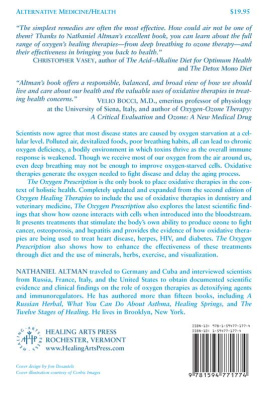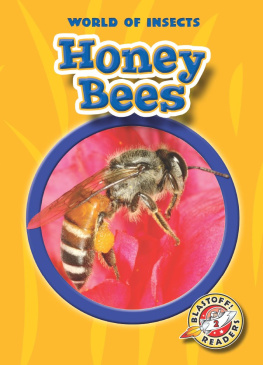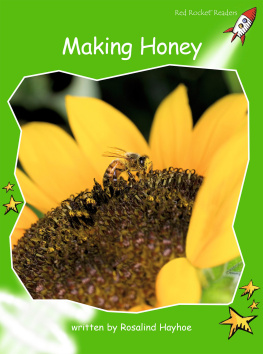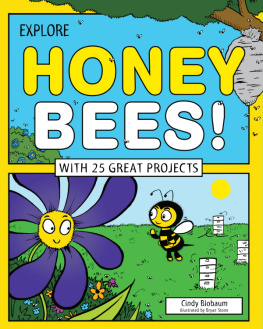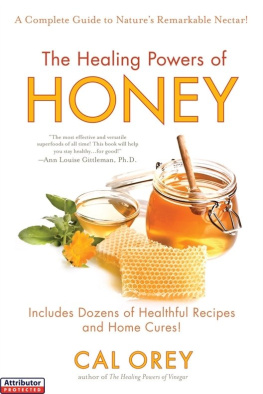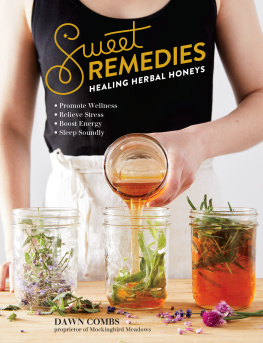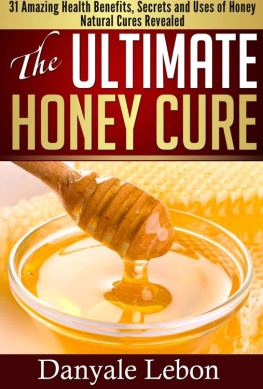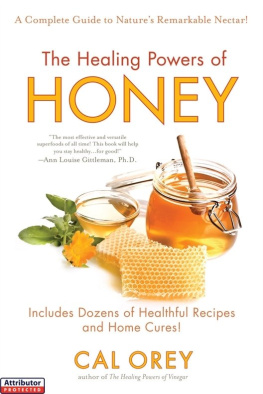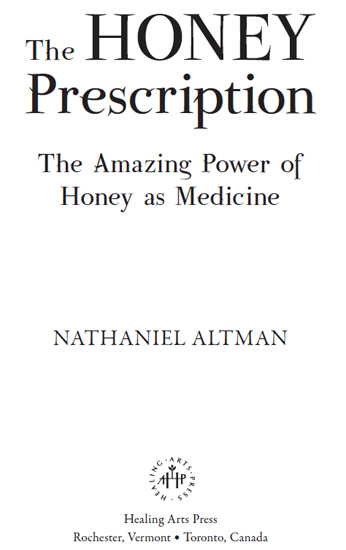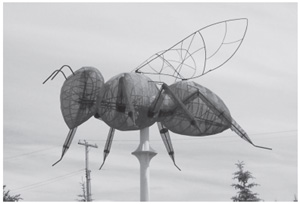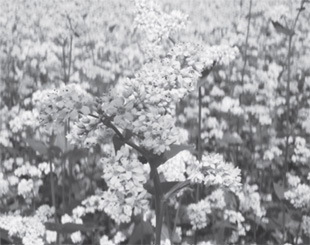Nathaniel Altman - The Honey Prescription: The Amazing Power of Honey as Medicine
Here you can read online Nathaniel Altman - The Honey Prescription: The Amazing Power of Honey as Medicine full text of the book (entire story) in english for free. Download pdf and epub, get meaning, cover and reviews about this ebook. year: 2010, publisher: Healing Arts Press, genre: Romance novel. Description of the work, (preface) as well as reviews are available. Best literature library LitArk.com created for fans of good reading and offers a wide selection of genres:
Romance novel
Science fiction
Adventure
Detective
Science
History
Home and family
Prose
Art
Politics
Computer
Non-fiction
Religion
Business
Children
Humor
Choose a favorite category and find really read worthwhile books. Enjoy immersion in the world of imagination, feel the emotions of the characters or learn something new for yourself, make an fascinating discovery.

- Book:The Honey Prescription: The Amazing Power of Honey as Medicine
- Author:
- Publisher:Healing Arts Press
- Genre:
- Year:2010
- Rating:3 / 5
- Favourites:Add to favourites
- Your mark:
The Honey Prescription: The Amazing Power of Honey as Medicine: summary, description and annotation
We offer to read an annotation, description, summary or preface (depends on what the author of the book "The Honey Prescription: The Amazing Power of Honey as Medicine" wrote himself). If you haven't found the necessary information about the book — write in the comments, we will try to find it.
Explains the physiological reasons why honey is so effective and includes recipes for honey-based remedies for many different ailments
Discusses the sacred role of bees from ancient Egypt to modern times and the problem of Colony Collapse Disorder (with methods for protecting hives)
Reveals the healing power of honey for many common problems--from burns, ulcers, and conjunctivitis to tooth decay, diabetes, and cystic fibrosis--and honeys ability to kill superbugs likeE. coli
The use of honey as a healing agent is nothing new. It was an ingredient in medicinal compounds and cures made by Egyptian physicians 5,000 years ago, and its medical use has been found in other ancient practices from traditional Chinese medicine and Indian Ayurveda to Mayan shamanism. In the past ten years there has been an explosion in scientific research on honey as medicine at universities, research centers, and medical clinics around the world.
Presenting the very latest scientific and medical evidence of the healing properties of honey--including that from the Honey Research Unit at the University of Waikato in New Zealand--Nathaniel Altman explores the broad spectrum of medicinal uses of honey and how these remedies can be used safely at home as well as by licensed health practitioners. He includes an extensive selection of honey-based recipes that can be used to treat common health problems--from burns, conjuctivitis, and ulcers to tooth decay, diabetes, and cystic fibrosis. He explains the physiological reasons why honey is so effective in treating antibiotic-resistant diseases with no side effects and honeys ability to kill superbugs likeE. coliand MRSA (Methicillin-resistantStaphylococcus aureus). Drawing on centuries of material from historical and folk medicine sources, he also examines the sacred role of bees from ancient Egypt onward and the modern problem of Colony Collapse Disorder, including methods for protecting our precious hives.
Nathaniel Altman: author's other books
Who wrote The Honey Prescription: The Amazing Power of Honey as Medicine? Find out the surname, the name of the author of the book and a list of all author's works by series.

